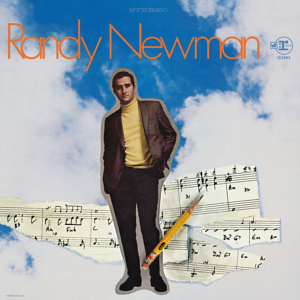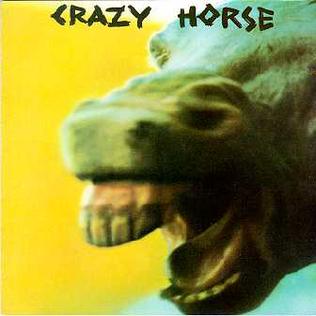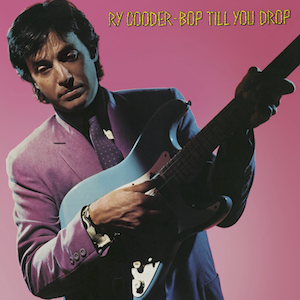
Ryland Peter Cooder is an American musician, songwriter, film score composer, record producer, and writer. He is a multi-instrumentalist but is best known for his slide guitar work, his interest in traditional music, and his collaborations with traditional musicians from many countries.

The Velvet Underground is the third studio album by the American rock band the Velvet Underground. Released in March 1969 by MGM Records, it was their first record with multi-instrumentalist Doug Yule, who replaced previous member John Cale. Recorded in 1968 at TTG Studios in Los Angeles, California, the album's sound—consisting largely of ballads and straightforward rock songs—marked a notable shift in style from the band's previous recordings. Lead vocalist Lou Reed intentionally did this as a result of their abrasive previous studio album White Light/White Heat (1968). Reed wanted other band members to sing on the album; Yule contributed lead vocals to the opening track “Candy Says” and the closing track "After Hours" is sung by drummer Maureen Tucker.

Pretzel Logic is the third studio album by American rock band Steely Dan, released by ABC Records on February 20, 1974. It was recorded at the Village Recorder in West Los Angeles, California, with producer Gary Katz. The album was Steely Dan's last to be made and released while the group was still an active touring band, as well as the final album to feature the band's full quintet-lineup of Becker, Fagen, Denny Dias, Jim Hodder, and Jeff "Skunk" Baxter, though it also features significant contributions from many prominent Los Angeles-based studio musicians.

Kick Out the Jams is the debut album by American rock band MC5. It was released in February 1969, through Elektra Records. It was recorded live at Detroit's Grande Ballroom over two nights, Devil's Night and Halloween, 1968.

Let It Bleed is the eighth studio album by the English rock band the Rolling Stones, released on 28 November 1969 by London Records in the United States and on 5 December 1969 by Decca Records in the United Kingdom. Released during the band's 1969 American Tour, it is the follow-up to Beggars Banquet (1968), and like that album is a return to the group's more blues-oriented approach that was prominent in the pre-Aftermath (1966) period of their career. Additional sounds on the album draw influence from gospel, country blues and country rock.

Sweet Baby James is the second studio album by American singer-songwriter James Taylor, released on February 1, 1970, by Warner Bros. Records.

The Wind is the twelfth and final studio album by American singer-songwriter Warren Zevon. The album was released on August 26, 2003, by Artemis Records. Zevon began recording the album shortly after he was diagnosed with inoperable pleural mesothelioma, and it was released just two weeks before his death on September 7, 2003. The album was awarded the Grammy Award for Best Contemporary Folk Album, and "Disorder in the House", performed by Zevon with Bruce Springsteen, won the Grammy for Best Rock Vocal Performance. Songs from the album were nominated for an additional three Grammys.

Déjà Vu, is the second studio album by American folk rock group Crosby, Stills & Nash, and their first as a quartet with Neil Young. Released in March 1970 by Atlantic Records, it topped the pop album chart for one week and generated three Top 40 singles: "Woodstock", "Teach Your Children", and "Our House". It was re-released in 1977 and an expanded edition was released in 2021 to mark its fiftieth anniversary.

Aftermath is a studio album by the English rock band the Rolling Stones. The group recorded the album at RCA Studios in California in December 1965 and March 1966, during breaks between their international tours. It was released in the United Kingdom on 15 April 1966 by Decca Records and in the United States in late June or early July 1966 by London Records. It is the band's fourth British and sixth American studio album, and closely follows a series of international hit singles that helped bring the Stones newfound wealth and fame rivalling that of their contemporaries the Beatles.

Music of My Mind is the fourteenth studio album by American singer, songwriter, and musician Stevie Wonder. It was released on March 3, 1972, by Tamla Records, and was Wonder's first to be recorded under a new contract with Motown that allowed him full artistic control over his music. For the album, Wonder recruited electronic music pioneers Malcolm Cecil and Robert Margouleff as associate producers, employing their custom TONTO synthesizer on several tracks. The album hit No. # 21 in the Billboard LP charts, and critics found it representative of Wonder's artistic growth, and it is generally considered by modern critics to be the first album of Wonder's “classic period”.

Sail Away is the third studio album by Randy Newman, released on May 23, 1972. It was produced by Lenny Waronker and Russ Titelman and issued on Reprise Records. While all of its songs were written and composed by Newman, several had already been recorded by other artists.

Good Old Boys is the fourth studio album by American musician Randy Newman, released on September 10, 1974 on Reprise Records, catalogue number 2193. It was Newman's first album to obtain major commercial success, peaking at number 36 on the Billboard 200 and number 58 in Canada. The premiere live performance of the album took place on October 5, 1974, at the Symphony Hall in Atlanta, Georgia, with guest Ry Cooder and Newman conducting the Atlanta Symphony Orchestra.

Randy Newman is the debut studio album by American singer-songwriter Randy Newman, released in 1968 by Reprise Records. The album is sometimes referred to as Randy Newman Creates Something New Under the Sun, written on the reverse of the album sleeve. Newman had been a noted songwriter for some years prior to the release of his debut, which was advertised as sounding "like a greatest hits". In contrast to his later albums which usually feature Newman and his piano with a rock backing, Randy Newman is highly orchestral.

Little Criminals is the fifth studio album by American singer-songwriter Randy Newman. Like most of Newman's work, the album eschews traditional pop-music themes in favor of musical story-telling, often featuring quirky characters and cynical views. The first song on the album – "Short People" – became a hit single in its own right. The album itself peaked at #9 on the US Billboard 200 chart, Newman's highest-charting album to date.

Born Again is the sixth studio album by American musician Randy Newman. The album was released in August 1979, to little sales and mostly positive reviews, which surprised Newman. Newman went on to say that Born Again was the strangest album that he had ever done. The album cover features Randy Newman in a business office, wearing face makeup, with dollar signs painted over his eyes, appearing to poke fun at the commercialization of rock music.

Bring the Family is John Hiatt's eighth album. It was his first album to chart on the Billboard 200, and featured his first single entry on the mainstream rock chart with "Thank You Girl". It features Ry Cooder on guitar, Nick Lowe on bass guitar and Jim Keltner on drums. The four would later reform as Little Village and release an album in 1992. "Thing Called Love" later became a hit for Bonnie Raitt, and "Have a Little Faith In Me" is among Hiatt's most popular songs, although it wasn't released as a single in America.

Crazy Horse is the debut album by Crazy Horse, released in 1971 by Reprise Records. It is the only album by the band to feature Danny Whitten recorded without Neil Young, and it peaked at No. 84 on the Billboard 200 album chart.

"Memo from Turner" is a solo single by Mick Jagger, featuring slide guitar by Ry Cooder, from the soundtrack of Performance, in which Jagger played the role of Turner, a reclusive rock star. It was re-released in October 2007 on a 17-song retrospective compilation album The Very Best of Mick Jagger, making a re-appearance as a Jagger solo effort. After its original release in 1970, it was included on Rolling Stones compilations, such as Singles Collection: The London Years as a track credited to the Jagger/Richards songwriting partnership. "Memo from Turner" was ranked No. 92 in the 100 Greatest Guitar Songs list of Rolling Stone.

Bop Till You Drop is Ry Cooder's eighth album, released in 1979. The album was the first digitally recorded major-label album in popular music, recorded on a digital 32-track machine built by 3M.

Complete & Unbelievable: The Otis Redding Dictionary of Soul, or simply Dictionary of Soul, is the fifth studio album by American soul singer-songwriter Otis Redding and his last solo studio album released before his death. The successful Otis Blue and the following performance at Whisky a Go Go led to his rising fame across the United States. The first side of the album mainly contains cover versions, and the second songs mainly written by Redding.



















